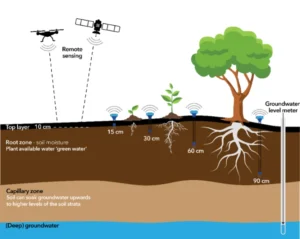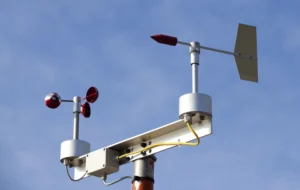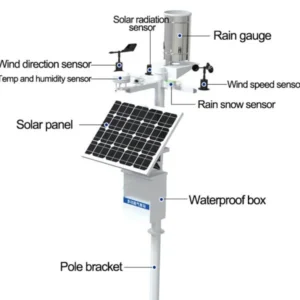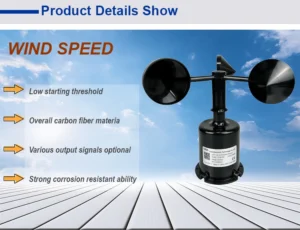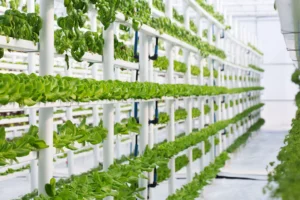Understanding Water Level Gauge
An electronic water level gauge is a modern sensor that measures water levels. It has parts like a PCB circuit board, electrodes, epoxy resin, a metal shell, and a cable.
Working Principle of Electronic River Water Level Gauge
The water level meter uses a set of electrodes placed at regular intervals. These electrodes measure water depth by detecting different electrical potentials. The potentials change based on the conductivity of the water.
By checking these differences, the gauge can tell which electrodes are underwater. This counts the number of submerged electrodes to help measure the water depth.
Installation of the Digital water level meter
The electronic water level gauge can be installed in two ways. It can be set up vertically or on a sloped wall, depending on the site conditions.
Vertical Installation
For vertical installation, you can combine sensor segments of different sizes to get the right length. Use a U-shaped connector to connect them and create one complete sensor unit.
Tilted Installation
It is like a vertical installation, but the sensors are at an angle. The sensor’s measuring length must be changed to show measuring height. This improves measuring accuracy.
Modes of Operation for Electronic Water Level Depth Gauge
The digital water level meter works in three modes: elevation mode, depth mode, and inclination mode.
Altitude Mode: This mode calculates the water level. It uses the formula: total length of the water gauge minus the water level plus the reference value.
Water Depth Mode: Derives water level value via the formula: water level + reference value.
Tilt Mode: Computes water level value using: water level * cos(angle) + reference value.
Precautions for Using River Level Gauges
1. When installing, make sure to place sensors in the right order based on their length. Also, keep the correct orientation.
2.If the sensor’s connection is longer than 4 meters, it is best to do a step-by-step installation on site.
3.Avoid installing the sensors in a cascade style without extra support. This helps prevent damage during transport and movement.




